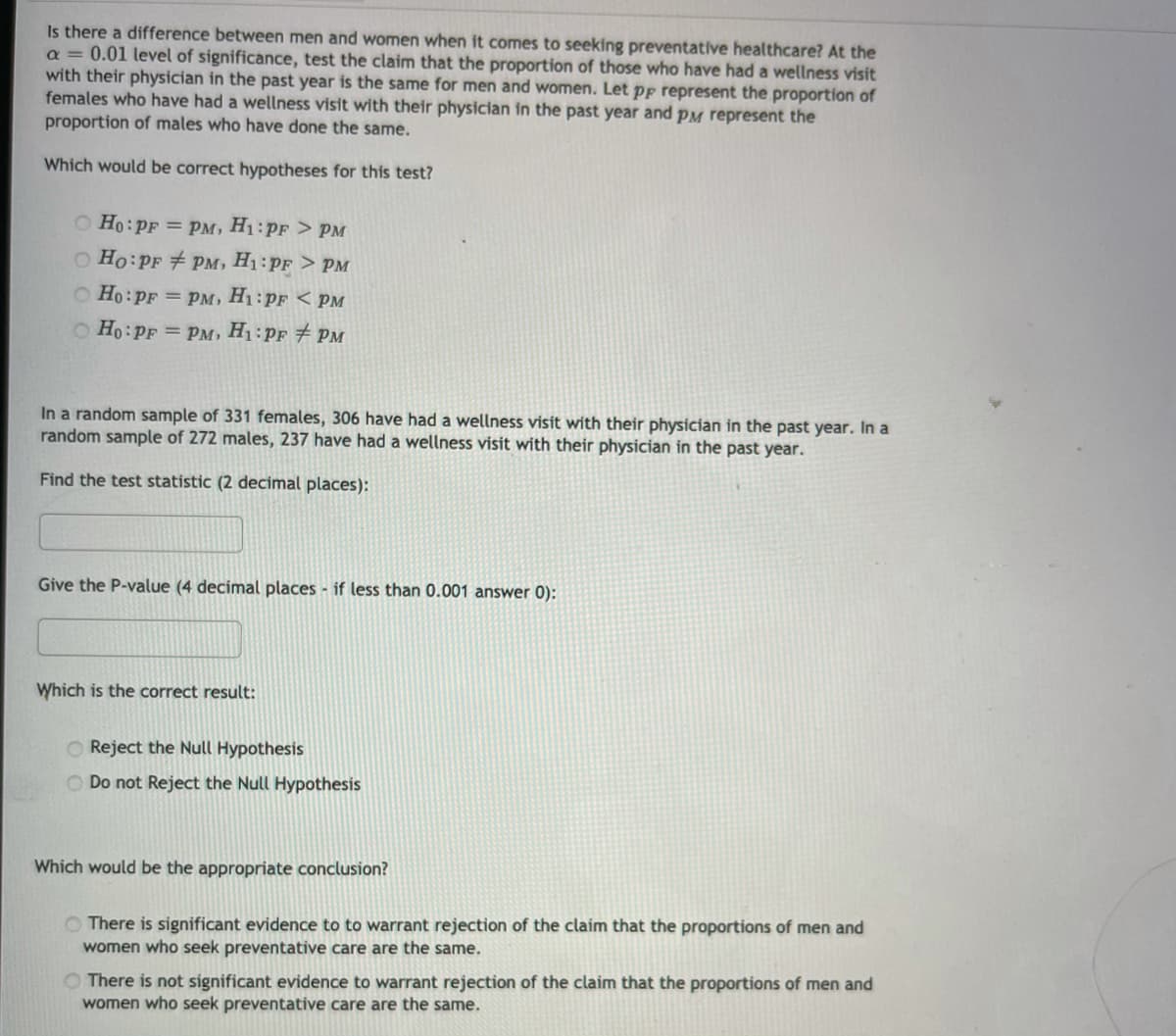Is there a difference between men and women when it comes to seeking preventative healthcare? At the a = 0.01 level of significance, test the claim that the proportion of those who have had a wellness visit with their physician in the past year is the same for men and women. Let pp represent the proportion of females who have had a wellness visit with their physician in the past year and pM represent the proportion of males who have done the same. Which would be correct hypotheses for this test? O Ho: PF = PM, H1:PF > PM O Ho:PF # PM, H1:PF > PM O Ho: PF = PM, H1:pF < pM O Ho:PF = PM, H1:PF # PM In a random sample of 331 females, 306 have had a wellness visit with their physician in the past year. In a random sample of 272 males, 237 have had a wellness visit with their physician in the past year. Find the test statistic (2 decimal places): Give the P-value (4 decimal places - if less than 0.001 answer 0): Which is the correct result: O Reject the Null Hypothesis O Do not Reject the Null Hypothesis Which would be the appropriate conclusion? O There is significant evidence to to warrant rejection of the claim that the proportions of men and women who seek preventative care are the same. O There is not significant evidence to warrant rejection of the claim that the proportions of men and women who seek preventative care are the same.
Correlation
Correlation defines a relationship between two independent variables. It tells the degree to which variables move in relation to each other. When two sets of data are related to each other, there is a correlation between them.
Linear Correlation
A correlation is used to determine the relationships between numerical and categorical variables. In other words, it is an indicator of how things are connected to one another. The correlation analysis is the study of how variables are related.
Regression Analysis
Regression analysis is a statistical method in which it estimates the relationship between a dependent variable and one or more independent variable. In simple terms dependent variable is called as outcome variable and independent variable is called as predictors. Regression analysis is one of the methods to find the trends in data. The independent variable used in Regression analysis is named Predictor variable. It offers data of an associated dependent variable regarding a particular outcome.

Trending now
This is a popular solution!
Step by step
Solved in 4 steps with 3 images


